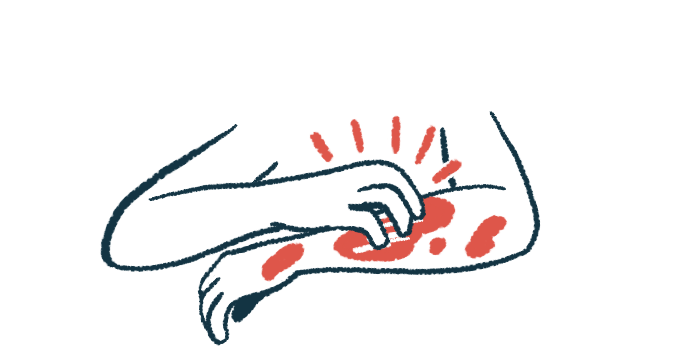Inflammatory interleukin-6 linked to more severe, larger wounds
Most extreme RDEB cases in children had most IL-6, study finds

An inflammatory protein called interleukin (IL)-6 is found at higher levels in people with epidermolysis bullosa who have more severe disease and larger wounds, a study found, suggesting IL-6 may be used to monitor disease progression and response to treatment.
The study, “IL-6 levels dominate the serum cytokine signature of severe epidermolysis bullosa: A prospective cohort study,” was published as a short report in the Journal of the European Academy of Dermatology & Venereology.
Epidermolysis bullosa causes the skin to become fragile and likely to blister or tear from minor trauma or friction, such as scratching. Systemic inflammation, meaning inflammation throughout the body, is thought to have a role to play, but that role is still unclear.
The study and its findings
To know more, a mostly German team of researchers measured the levels of proinflammatory, anti-inflammatory, and itch-related proteins in the blood of 29 children with junctional epidermolysis bullosa (JEB) or recessive dystrophic epidermolysis bullosa (RDEB), where blistering results form fragile connections between the skin’s layers.
Elevated levels of C-reactive protein, a sign of systemic inflammation, were observed in 18 children. Of all inflammatory proteins, IL-6 stood out the most. Its levels were consistently higher than normal in 26 children with epidermolysis bullosa.
Itching, a common symptom of epidermolysis bullosa, was reported by 22 children, including all 12 with severe RDEB for whom the information was available. Sixteen of the 22 had elevated levels of at least one of the itch mediators IgE, TSLP, IL-4, or IL-31.
“This suggests that [epidermolysis bullosa] might share the itch mediators of common pruritic [itchy skin] disorders … and warrants further investigation,” the researchers wrote.
Median IL-6 levels were higher in children with severe RDEB than in those with JEB — 304 vs. 34.9 picograms/mL (pg/mL) — or less severe RDEB (15.2 pg/mL). The levels of another inflammatory protein, called TGF-beta, also were slightly elevated in some cases of severe RDEB, but not as consistently as IL-6.
In another group of 42 children and adults with epidermolysis bullosa who were followed two years, IL-6 levels were also higher than normal. Those with 5% or more or 10% or more of their body surface area affected by wounds had high IL-6 levels, whereas those with up to 3% affected had normal IL-6 levels.
“Our data suggests that IL-6 can be useful to monitor in patients with severe disease, and that wound area is a meaningful criterion for [epidermolysis bullosa] subclassification,” the researchers wrote. “Targeted anti-inflammatory therapy may be reasonable,” they added.







